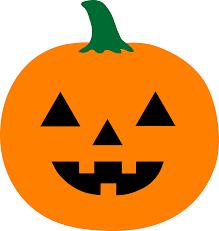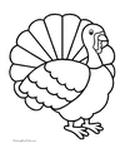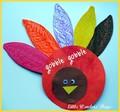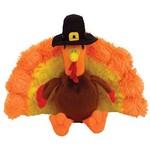Curriculum and Home Carryover - Fall
Please take a peek at some of the things we'll be working on in Speech Therapy since as we start the school year. Since we all know that the answer to "What did you do at school today" is almost always a resounding "Nothing," I want to give you an idea of some of the stories we will be reading and some of the games we will be playing and also which language skills these activities will target. Hopefully, they will give you some ideas of things you could be working on at home. Many of the activity descriptions include links to descriptions of extension activities with pictures to support your child's at-home practice. As you can see, we read a lot of interactive stories in speech therapy. Try checking some of these same stories out of the library or looking them up on YouTube and letting your children show you what they have learned. I'm sure they would love the chance to show off and shine!
(**I created this page a few years back by adding each week's lesson to the site. It was a lot of work, but I loved being able to share each activity week to week so parents would have the opportunity to learn all about their children's activities in the Speech Room. Since the preschool classrooms tend to center their lessons around similar themes from one year to the next, I tend to use the same stories/activities to target my students' speech and language skills. Therefore, I decided to make this page permanent, despite the fact that the order of some of the activities may shuffle a bit from year to year. This way, you will be able to have a preview of upcoming lessons, as well as seeing what we have done in past weeks. Rest assured, if your child worked with me last year, as well, he/she will not be bored by the repeated activities. The children love to re-visit old favorites and I love having the opportunity to increase the difficulty level of the skills targeted while using similar activities and materials. It helps me to see how far my students have come in a year's time!)
September - Welcome back!
 This month the students participated in speech therapy lessons related to Classroom Rules. We read the story: How Do Dinosaurs Go To School and discussed the right choices and the wrong choices made by the various dinosaurs in the story. This silly story ties in some important Social Emotional Learning (SEL) concepts that are a focus of the preschool experience here at LMPA: self-regulation, social awareness, among others. The students then worked together to make their own dinosaur using a dinosaur assembly toy. Goals targeted by this activity included: body part vocabulary, formulating the phrase: "Put on_____", and identifying items by color.
This month the students participated in speech therapy lessons related to Classroom Rules. We read the story: How Do Dinosaurs Go To School and discussed the right choices and the wrong choices made by the various dinosaurs in the story. This silly story ties in some important Social Emotional Learning (SEL) concepts that are a focus of the preschool experience here at LMPA: self-regulation, social awareness, among others. The students then worked together to make their own dinosaur using a dinosaur assembly toy. Goals targeted by this activity included: body part vocabulary, formulating the phrase: "Put on_____", and identifying items by color.
Previewing the activity before your child is expected to play it him or herself in speech therapy can be very beneficial. Consider watching this video of two children playing the Dinosaur game to give your child an idea of the rules and expectations of the game (**please note: these children are not students on my caseload. In order to protect their privacy, I do not use film footage of my special education students on my website,) https://www.youtube.com/watch?v=OVzLwsdsP-w&feature=em-upload_owner
 September 19th is International Talk Like A Pirate Day! I dressed up as a pirate and we read the story Are Pirates Polite? The students then took turns describing pictures of children making the same polite choices as the pirates in the story (waiting in line, raising their hands before speaking, etc) and earned a chance to place a sword into the barrel. We all watched carefully to see whose sword would make the pirate pop out! Skills targeted: listening comprehension, color identification, turn-taking, SEL concepts. Practice polite behavior with your child at home (saying "please," and "thank you," greeting others, demonstrating good table manners, etc.
September 19th is International Talk Like A Pirate Day! I dressed up as a pirate and we read the story Are Pirates Polite? The students then took turns describing pictures of children making the same polite choices as the pirates in the story (waiting in line, raising their hands before speaking, etc) and earned a chance to place a sword into the barrel. We all watched carefully to see whose sword would make the pirate pop out! Skills targeted: listening comprehension, color identification, turn-taking, SEL concepts. Practice polite behavior with your child at home (saying "please," and "thank you," greeting others, demonstrating good table manners, etc.
 We also read the story There Was An Old Lady Who Swallowed Some Books.We used the Old Lady puppet to make the story more interactive as the students took turns feeding the old lady the various items in the story. Goals targeted by this activity included: "school item" vocabulary (books, pen, backpack, etc.), formulating phrases using the subjective pronoun "she" and the irregular past tense verb "ate." Stay tuned for more from the Old Lady. She makes frequent appearances in the Speech Room and in all of the Pre-K classrooms! In order to familiarize your child with "school supply" vocabulary, please consider taking a minute to watch this YouTube video of a school supply song. If you have school supplies handy, consider having your child receptively identify the various items when prompted during the song. https://www.youtube.com/watch?v=hjFaqDNUVFo
We also read the story There Was An Old Lady Who Swallowed Some Books.We used the Old Lady puppet to make the story more interactive as the students took turns feeding the old lady the various items in the story. Goals targeted by this activity included: "school item" vocabulary (books, pen, backpack, etc.), formulating phrases using the subjective pronoun "she" and the irregular past tense verb "ate." Stay tuned for more from the Old Lady. She makes frequent appearances in the Speech Room and in all of the Pre-K classrooms! In order to familiarize your child with "school supply" vocabulary, please consider taking a minute to watch this YouTube video of a school supply song. If you have school supplies handy, consider having your child receptively identify the various items when prompted during the song. https://www.youtube.com/watch?v=hjFaqDNUVFo
 Another story we read was: There Was An Old Lady Who Swallowed Some Leaves.: As with all of the Old Lady stories, we practice skills such as :Fall vocabulary, formulating grammatically correct phrases, sequencing and re-telling events in a story, making predictions, and identifying items by size, color, and shape.
Another story we read was: There Was An Old Lady Who Swallowed Some Leaves.: As with all of the Old Lady stories, we practice skills such as :Fall vocabulary, formulating grammatically correct phrases, sequencing and re-telling events in a story, making predictions, and identifying items by size, color, and shape.
October - Fall Fun!!
 We read The Little Old Lady Who Wasn't Afraid Of Anything. The students took turns acting out the parts of the story--making two shoes go "Clomp, Clomp", a pair of pants go "Wiggle, Wiggle," etc. We practiced skills such as clothing vocabulary,story sequence, making predictions, etc. The students love helping to tell this story using the clothing items and sound effects from the story. Click here for a document containing links to a YouTube video of the story, plus visuals that can be used to help your child re-tell the story at home!
We read The Little Old Lady Who Wasn't Afraid Of Anything. The students took turns acting out the parts of the story--making two shoes go "Clomp, Clomp", a pair of pants go "Wiggle, Wiggle," etc. We practiced skills such as clothing vocabulary,story sequence, making predictions, etc. The students love helping to tell this story using the clothing items and sound effects from the story. Click here for a document containing links to a YouTube video of the story, plus visuals that can be used to help your child re-tell the story at home!
 Now that we have read two stories in which the main character creates a scarecrow at the end (Sorry for the spoiler, if you haven't read them!), the students practiced working together to make their own scarecrow in the speech room. The students took turns rolling the dice to see which body part or clothing item they needed to add to the scarecrow. Many students benefited from the body part/clothing item vocabulary review. In addition, students were asked to use the carrier phrase "Put on_____" in order to create a full sentence before they assembled the scarecrow parts. The students were very proud of their finished product (which looked a lot like the scarecrow on the left).
Now that we have read two stories in which the main character creates a scarecrow at the end (Sorry for the spoiler, if you haven't read them!), the students practiced working together to make their own scarecrow in the speech room. The students took turns rolling the dice to see which body part or clothing item they needed to add to the scarecrow. Many students benefited from the body part/clothing item vocabulary review. In addition, students were asked to use the carrier phrase "Put on_____" in order to create a full sentence before they assembled the scarecrow parts. The students were very proud of their finished product (which looked a lot like the scarecrow on the left).
 The Old Lady was back again. This time she was getting ready for Halloween. We read the book "There Was An Old Lady Who Swallowed A Bat" and the students took turns feeding the lady various Halloween-themed items such as a bat, a ghost, and a monster. The students enjoyed talking to each other about the spooky Halloween decorations they had been seeing in their homes and neighborhoods. These types of conversations truly help to solidify the vocabulary into the students' memories.
The Old Lady was back again. This time she was getting ready for Halloween. We read the book "There Was An Old Lady Who Swallowed A Bat" and the students took turns feeding the lady various Halloween-themed items such as a bat, a ghost, and a monster. The students enjoyed talking to each other about the spooky Halloween decorations they had been seeing in their homes and neighborhoods. These types of conversations truly help to solidify the vocabulary into the students' memories.
 We created a Haunted House scene. Skills targeted included: identifying Halloween vocabulary (bat, witch, spider, etc) and following directions with attributes such as color, size, and location (ex, "Put the big pumkin next to the ghost."). We also incorporated some social language by having different students take turns holding the haunted house items (being the "Givers"), thereby requiring their partners (the "Takers") to request specific items. The "Givers" practiced asking their partners what they wanted, identifying and handing over the selected items, and using polite phrases such as "here you go," and "you're welcome." The "Takers" practiced using polite request phrases ("I want ___, please") and saying "thank you." This type of activity could easily be replicated at home using store-bought Halloween stickers on a Haunted House coloring page. Or click here to print out a Haunted House picture and some Halloween-themed items for your child to label and place on the house.
We created a Haunted House scene. Skills targeted included: identifying Halloween vocabulary (bat, witch, spider, etc) and following directions with attributes such as color, size, and location (ex, "Put the big pumkin next to the ghost."). We also incorporated some social language by having different students take turns holding the haunted house items (being the "Givers"), thereby requiring their partners (the "Takers") to request specific items. The "Givers" practiced asking their partners what they wanted, identifying and handing over the selected items, and using polite phrases such as "here you go," and "you're welcome." The "Takers" practiced using polite request phrases ("I want ___, please") and saying "thank you." This type of activity could easily be replicated at home using store-bought Halloween stickers on a Haunted House coloring page. Or click here to print out a Haunted House picture and some Halloween-themed items for your child to label and place on the house.
 We practiced answering "Who" questions using Halloween Costumes as a theme. We used images from the web as visual cues for anyone who may need them. Some examples of Halloween "Who" questions include: "Who has a red nose, works in a circus, and makes people laugh?," "Who flies in a spaceship?," and "Who rides a horse and says 'yee-haw'? Click on the link (or copy/paste it into your browser) for a list of Halloween "who" questions with corresponding pictures to help you play this game at home.
We practiced answering "Who" questions using Halloween Costumes as a theme. We used images from the web as visual cues for anyone who may need them. Some examples of Halloween "Who" questions include: "Who has a red nose, works in a circus, and makes people laugh?," "Who flies in a spaceship?," and "Who rides a horse and says 'yee-haw'? Click on the link (or copy/paste it into your browser) for a list of Halloween "who" questions with corresponding pictures to help you play this game at home.
https://docs.google.com/document/d/1s7MhgfHF7WrsAOMMJf5S4G2VfLfOA2yF_lKgHxFm0d4/edit?usp=sharing

 The students practiced their use and understanding of descriptive language by playing a jack o lantern auditory matching game. Students took turns being the "teller" and the "listener." The Teller's job was to describe his/her jack o lantern by talking about the color and shape of their eyes, nose, and mouth. The listeners were tasked with attending to the teller's description, and looking to see if he/she had the matching jack o lantern. For a description of how to play this game at home, including visual cues please click here!
The students practiced their use and understanding of descriptive language by playing a jack o lantern auditory matching game. Students took turns being the "teller" and the "listener." The Teller's job was to describe his/her jack o lantern by talking about the color and shape of their eyes, nose, and mouth. The listeners were tasked with attending to the teller's description, and looking to see if he/she had the matching jack o lantern. For a description of how to play this game at home, including visual cues please click here!
November - Feeling Thankful
 Turkey Two-Step: I placed die-cut turkeys with pictures depicting two-step directions face down on the table. The students took turns tossing a bean bag onto a turkey, then turning the card over to look at the directions. Then, all of the participants were asked to follow two step verbal directions such as "First, clap your hands, then, stomp your feet." Everyone particularly enjoyed the super silly instructions such as "First, wiggle like a worm, then make a monkey sound!" It was very difficult for many of the students to listen to, process, retain, motor plan, and then execute both steps of the instructions in order--making this an excellent activity to practice at home. Feel free to print out a few copies of these turkeys for your children to color on, then write your instructions on the back and start having fun. Turkey Page
Turkey Two-Step: I placed die-cut turkeys with pictures depicting two-step directions face down on the table. The students took turns tossing a bean bag onto a turkey, then turning the card over to look at the directions. Then, all of the participants were asked to follow two step verbal directions such as "First, clap your hands, then, stomp your feet." Everyone particularly enjoyed the super silly instructions such as "First, wiggle like a worm, then make a monkey sound!" It was very difficult for many of the students to listen to, process, retain, motor plan, and then execute both steps of the instructions in order--making this an excellent activity to practice at home. Feel free to print out a few copies of these turkeys for your children to color on, then write your instructions on the back and start having fun. Turkey Page
 Turkey Feathers: The students practiced receptive identification skills by following directions to place turkey feathers on a large turkey cut-out (something like this one). This activity required the students to correctly identify feathers of different colors and shapes and to place them in different locations on the cut-out. The students had many opportunities to practice carefully listening to color words, size words (big and little) and location words (next to, in front of, on top of, under, etc). Toward the end of the week students began taking turns instructing their peers as to which feathers to place where. This was an excellent opporunity for the students to practice talking and listening to other children--and not just adults.
Turkey Feathers: The students practiced receptive identification skills by following directions to place turkey feathers on a large turkey cut-out (something like this one). This activity required the students to correctly identify feathers of different colors and shapes and to place them in different locations on the cut-out. The students had many opportunities to practice carefully listening to color words, size words (big and little) and location words (next to, in front of, on top of, under, etc). Toward the end of the week students began taking turns instructing their peers as to which feathers to place where. This was an excellent opporunity for the students to practice talking and listening to other children--and not just adults.
 Feed the Turkey: The students practiced identifying objects by description by following directions to feed a turkey puppet foods of different colors, shapes, and sizes. Once the students mastered the ability to identify food items based upon a description, they were then asked to describe a food for a friend to select and feed to the turkey. *(This activity was modified for students with earlier language skills by having them feed the food item named (as opposed to described) by the SLP as well as naming a food item for a friend choose.) Practice this at home using dolls/stuffed animals and pretend food. Take turns being the "listener" and the "teller." Have them follow directions, and also generate instructions such as"Feed the doll something red," or "something square-shaped," etc.
Feed the Turkey: The students practiced identifying objects by description by following directions to feed a turkey puppet foods of different colors, shapes, and sizes. Once the students mastered the ability to identify food items based upon a description, they were then asked to describe a food for a friend to select and feed to the turkey. *(This activity was modified for students with earlier language skills by having them feed the food item named (as opposed to described) by the SLP as well as naming a food item for a friend choose.) Practice this at home using dolls/stuffed animals and pretend food. Take turns being the "listener" and the "teller." Have them follow directions, and also generate instructions such as"Feed the doll something red," or "something square-shaped," etc.
- My Home
- About Me
- Helpful Links
- Online Language Activities
- Printable Visual Supports and Games for Home Practice
- Curriculum and Home Carryover - Fall
- Curriculum and Home Carryover - Winter
- Curriculum and Home Carryover - Spring
- Speech Pics
- Wish List
- Toys and Games to Promote Language Development
- Videos
- Mindsets For Learning
- Social Emotional Learning
This site provides information using PDF, visit this link to download the Adobe Acrobat Reader DC software.
